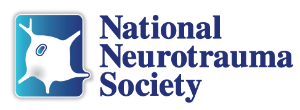Main Menu
Description & Objectives S05
S05: Cervical SCI and Restoration of Respiratory Function








Chairs: Warren Alilain, PhD and Michael Lane, PhD
S05.01 - Optogenetic Dissection Reveals the Architecture of Brainstem and Spinal Cord Respiratory Circuit
Jared Cregg, BS - Case Western Reserve University
S05.02 - Therapeutic Effect of Muscle Stimulation on Respiratory Function After Cervical SCI
Tatiana Bezdudnaya, PhD -Drexel University
S05.03 - Transplantation-Based Replacement of Astrocyte Glutamate Transporters Following SCI
Angelo Lepore, PhD - Thomas Jefferson University
S05.04 - Neurotrophic Signaling and Functional Recovery After
Cervical SCI
Carlos Mantilla, PhD - Mayo Clinic
Session Description
This session will focus on cervical spinal cord injury (SCI) and recent advances in restoring respiratory function after injury. More than 50% of all SCI cases occur at cervical levels and the incidence increased by ~9% in the last year. Among the vast range of motor and sensory deficits that arise from injuries at these levels, compromised respiratory function is one of the most debilitating and life-threatening. Respiratory deficits after cervical SCI are due in large part to compromised phrenic circuitry, which controls diaphragm function. Cervical SCI can directly injure phrenic motor neurons (distributed from C3-C6) and the mono- and polysynaptic inputs they receive from the medulla, resulting in diaphragm paralysis/paresis. Compromised respiratory function remains a leading contributor to morbidity and mortality in people with cervical SCI. Thus, there is an urgent need to focus research efforts in this area. Despite a growing number of scientific and experimental investigators studying respiratory dysfunction, plasticity and strategies to promote recovery, this topic has received little attention at previous Neurotrauma meetings. This session, if accepted, would be the first to address this important research area. Multiple laboratories have made recent advances, and their discoveries would be the highlight of this session. Among these breakthroughs include (but not limited to): optogenetic approaches to restore breathing, non-invasive techniques which can induce respiratory motor plasticity after SCI, and utilization of more clinically relevant cervical injury models.
Learning Objectives
At the conclusion of this session, attendees will be able to:
- Describe basic CNS and PNS circuitry which mediate respiratory motor function before and after injury.
- Describe the devastating effects of cervical spinal cord injury on respiratory function and patient quality of life.
- Understand cutting edge research and findings from laboratories whose primary focus is on cervical spinal cord injury and restoration of restoration of respiratory function.
